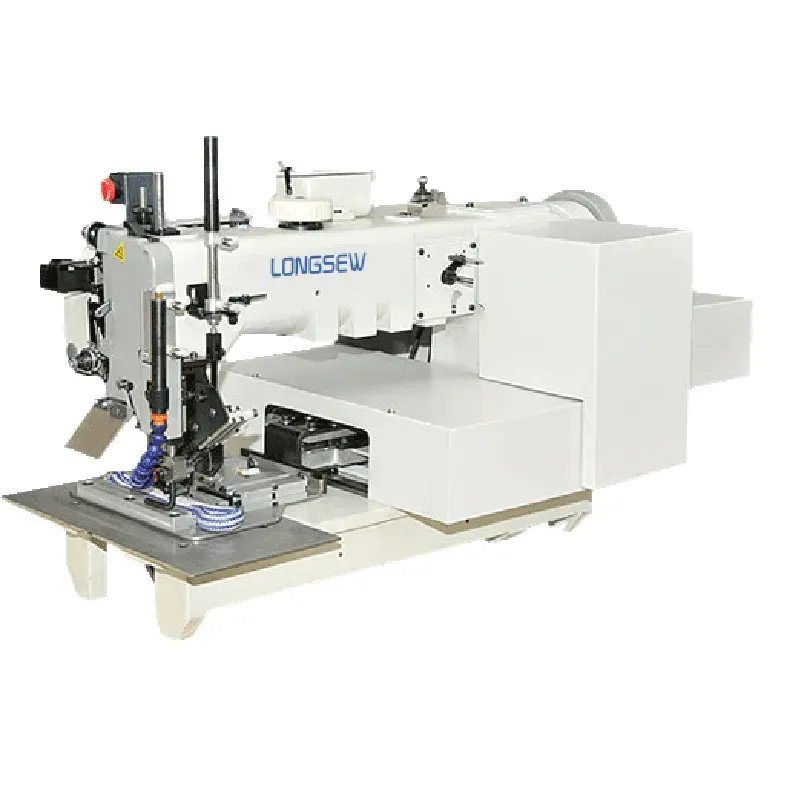what is a lockstitch machine
Understanding the Lockstitch Machine
A lockstitch machine is a vital piece of equipment in the world of sewing, widely used in both commercial and home textile manufacturing. Its design and functionality have stood the test of time, making it an essential tool for sewers and garment makers alike. But what exactly is a lockstitch machine, and how does it work?
The lockstitch machine operates by interlocking two threads to create a secure stitch. This process typically involves a top thread, which is fed from a spool, and a bottom thread, which comes from a bobbin that sits beneath the needle plate. When the machine is operated, the needle moves up and down, piercing the fabric and pulling the top thread through. At the same time, a hook mechanism grabs the top thread and wraps it around the bottom thread, forming a sturdy interlock. This continuous process results in a tight and durable stitch that is well-suited for a variety of fabrics.
The versatility of lockstitch machines makes them suitable for a broad range of sewing applications. They are commonly used for stitching woven fabrics, especially in garment construction, as they produce a flat seam that remains discreet and comfortable against the skin. Moreover, they are ideal for quilting, home décor projects, and other sewing applications where precision and strength are essential.
what is a lockstitch machine

One of the significant advantages of using a lockstitch machine is the quality of the stitch it produces. Unlike other stitching methods—such as chain stitching—lockstitch creates a seam that is less likely to unravel if it becomes damaged. This property is particularly important in clothing and other items that experience a lot of wear and tear. Additionally, lockstitch seams can be easily adjusted and finished, allowing for clean edges and professional-looking results.
Modern lockstitch machines come equipped with numerous features that enhance their usability and efficiency. Many models include automatic needle positioning, thread trimming systems, and even computerized settings that allow users to adjust stitch length and tension easily. These advancements not only streamline the sewing process but also make it more accessible for beginners.
Despite the technological advancements in sewing machines, the fundamental principle behind the lockstitch remains unchanged. Its reliability and efficiency have solidified its place in textile manufacturing, ensuring that it remains a go-to choice for sewers worldwide.
In conclusion, the lockstitch machine is a quintessential tool in sewing, offering unparalleled stitch quality and versatility. Whether you are an experienced sewer or just starting, understanding how a lockstitch machine works will help you appreciate its role in creating high-quality garments and textile products. With its enduring reliability, the lockstitch machine continues to be an indispensable asset in the sewing industry.
-
Industrial Cylinder Arm Sewing Machine: Revolutionizing Heavy-Duty SewingNewsJul.28,2025
-
Cylinder Arm Sewing Machine: Perfect for Special Sewing ApplicationsNewsJul.28,2025
-
Cylinder Bed Sewing Machine: Essential for Sewing Complex MaterialsNewsJul.28,2025
-
Heavy Duty Sewing Machine: The Essential Tool for Industrial ApplicationsNewsJul.28,2025
-
Computerized Pattern Sewing Machine: Revolutionizing Precision StitchingNewsJul.28,2025
-
Heavy Duty Industrial Sewing Machine: Power Meets PrecisionNewsJul.28,2025
-
Leather Sewing Machine: The Industrial Standard for Tough MaterialsNewsJul.18,2025





























